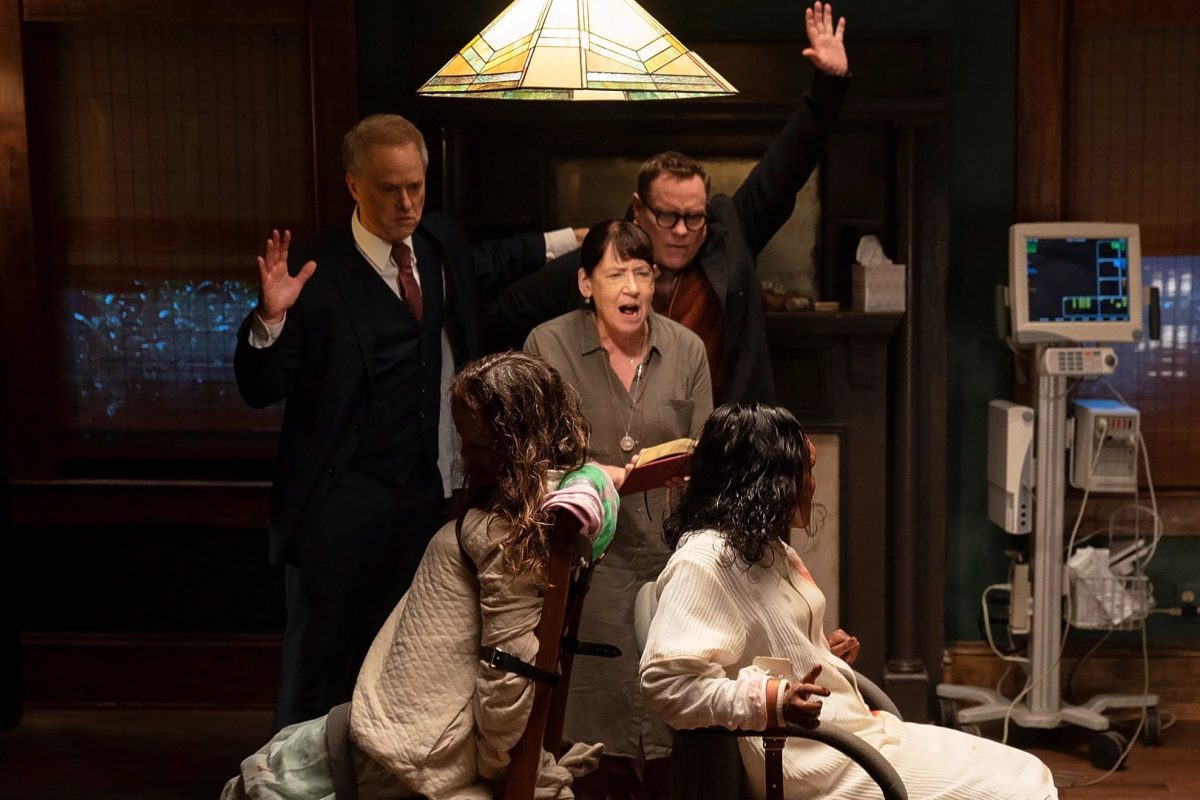Pomegranate Seeds: 3/10
After paying $400 million for the rights to The Exorcist brand, Blumhouse’s first entry to the iconic horror franchise lands with a resounding “ugh”. The Exorcist: Believer is the sixth installment in the series and it acts as a direct legacy sequel to the 1973 classic, with the two leads reprising their roles. The new film is directed by David Gordon Green (Halloween 2018, Pineapple Express), with a screenplay written by himself and Peter Sattler.
The first movie is not only one of the greatest horror films but is one of the greatest films of all time. It is dark, emotional, disturbing, personal, tightly written, impressively acted and directed, and features some of the most iconic moments in the history of cinema. The Exorcist: Believer not only fails to match those lofty standards but also misses the mark when it comes to the already low bar set by contemporary supernatural horror films and legacy sequels.
As he more than proved with his shapeless Halloween trilogy, David Gordon Green continues to be a competent visual director, who can’t write a good screenplay to save his life. Like Halloween before it, he understands what made the original film so iconic, while missing the smaller details that make it exceptional. He mimics it in broad strokes — starting the film in a foreign country, spending a while establishing the family, many scenes in hospitals, and an eerily happy ending to name a few — but misses what made those moments great in the first place.
The opening minutes of the film are one of the most blatant examples of this. The first film spends time building up a mystery by starting in Iraq with the supporting character Father Lancaster Merrin. These 10 minutes are chosen carefully and reflect what will happen in the film in subtle and large ways, as well as being beautifully shot. Where Friedkin and Blatty used the opening to patiently craft one of the most mysterious and discussed prologues in any horror movie, Green’s film seems eager to spell its purpose out at almost every turn. In Believer, Green shackles the motif to literalism, throwing any spiritual or thematic connections aside, and plays it as a generic “tragic backstory” scene to make you care about the protagonist.
This commitment to interpreting every scene in the most literal, shallow way possible reflects the lack of purpose this film gives off. The Exorcist, the book and the first film, are personal stories written by a Roman Catholic author that examines how faith comes in many forms. Green’s film throws out some vague biblical parallels and ends with the cinematic equivalent of a shrug, deciding it wants to spend the last few minutes pontificating on hope. Blatty’s stories moved with a drive and a grace, while Green’s film bumbles around for two hours. The Exorcist subtly says a lot, while The Exorcist: Believer clumsily says nothing in many words.
After the film finishes its disorienting first act, it transitions into its indulgent and drawn-out second. While the characters are nowhere near as underwritten as they were in his Halloween films, there are too many of them and not enough development is given to any of them. Ellen Burstyn (Requiem for a Dream, Alice Doesn’t Live Here Anymore) is a great actress given nothing to work with, and she does have some of the worst lines in the film (I audibly laughed out loud when she said “My opinion? Because I’m not a member of the damn patriarchy.”)
Despite having no interest in it, the film brings up the topic of religion a lot without saying anything about it. Strangely, a film called The Exorcist: Believer decides to decentralize its religious themes and remove the overt catholicism present in every other film in the franchise. Instead of embracing a new religion, the film presents a goofy setup where exorcisms from multiple belief systems are happening at the same time.
The best part about The Exorcist: Believer is the performances from the two lead girls, Lidya Jewett (Good Girls, Hidden Figures) and newcomer Olivia O’Neill. Also, the makeup effects on the two girls in their possessed forms are fittingly disgusting.
In its final act, the film delves head first into schlock, with overdone emotional beats and scares. The closest thing it comes to innovation is making it two possessed girls this time. All of the twists and turns get increasingly dumber and dumber
The Exorcist: Believer is not a sequel for fans of The Exorcist, it is a movie that mistakes the greatness of the first film for its miscellaneous iconography. Beyond not being scary, the film’s biggest sin is how boring it is. The film is an insult to the legacy of one of the greatest films of all time, and the most terrifying thing about it is that a sequel is already in development.
Verdict:
3/10




























